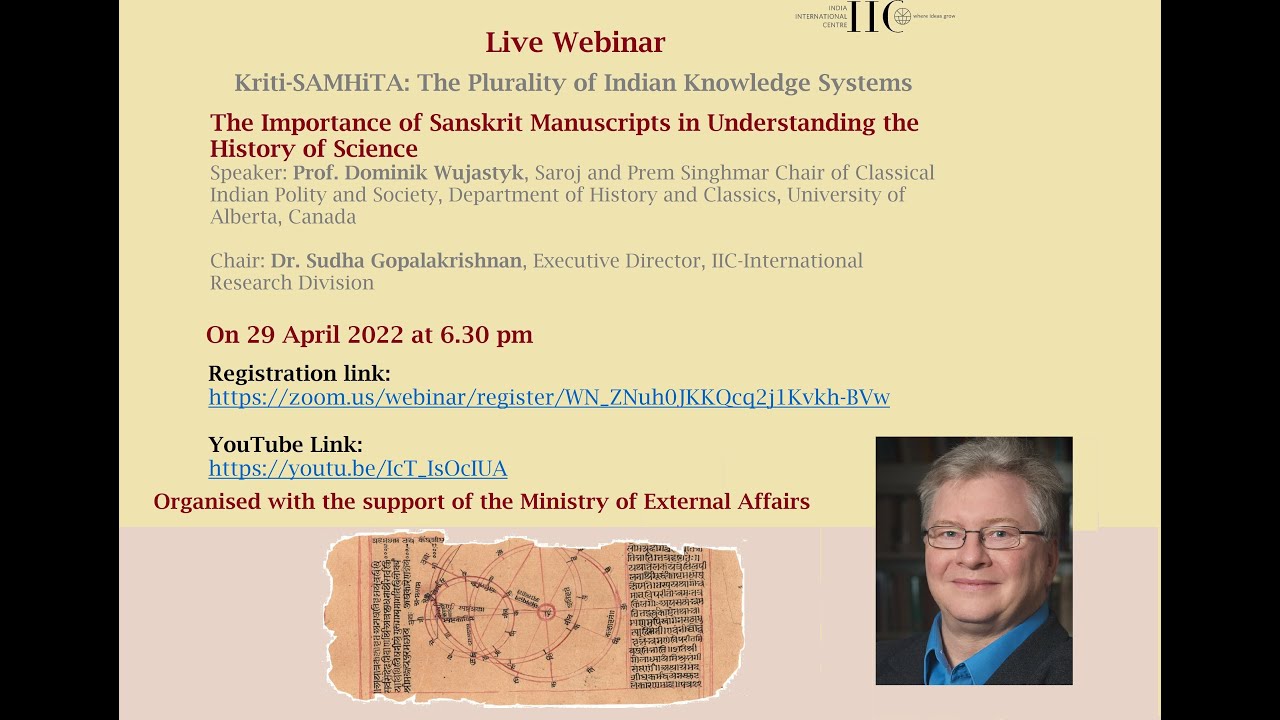The Importance of Sanskrit Manuscripts in Understanding the History of Science
Inaugural Remarks: Shri K.N. Shrivastava, Director, IIC
Speaker: Prof. Dominik Wujastyk, Saroj and Prem Singhmar Chair of Classical Indian Polity and Society, Department of History and Classics, University of Alberta, Canada
Chair: Dr. Sudha Gopalakrishnan, Executive Director, IIC-International Research Division
Professor Dominik Wujastyk holds the Singhmar Chair in Classical Indian Society and Polity at the University of Alberta, Canada. After completing a BSc in Physics, he took masters and doctoral degrees in Sanskrit from Oxford. He has worked extensively with Sanskrit manuscripts and on Indian social and intellectual history, including traditions of debate. His expertise ranges from Sanskrit grammar, to the history of Indian medicine and science, and the history of yoga. Among his books are, A Handlist of Sanskrit and Prakrit Manuscripts, Metarules of Paninian Grammar and The Roots of Ayurveda. He founded the INDOLOGY online discussion forum in 1990, and was co-founder of the journal, History of Science in South Asia. In 2020, Professor Wujastyk was awarded a four-year Canadian SSHRC Insight Grant for the Suśruta Project (http://sushrutaproject.org) that is investigating the early history of medicine in South Asia.
The largest and intellectually most important collections of Indian manuscripts are to be found in India and Nepal. Many of these manuscripts provide unique insights into the history of Indian mathematics, medicine and other sciences. There are four major problems that face a scholar who wishes to study the manuscript heritage: discovery, access, interpretation and dissemination. Yet modern developments in software and Digital Humanities provide important solutions to these problems. This lecture will discuss these issues with reference to a research project on the medical classic called The Compendium of Su?ruta. The discovery of a 1000-year-old manuscript allows us to plot the changes the work has gone between the ninth century and today, but the discovery brings with it many practical difficulties.
First in a new series of lectures organised by IIC-International Research Division
Registration link:
https://zoom.us/webinar/register/WN_ZNuh0JKKQcq2j1Kvkh-BVw


